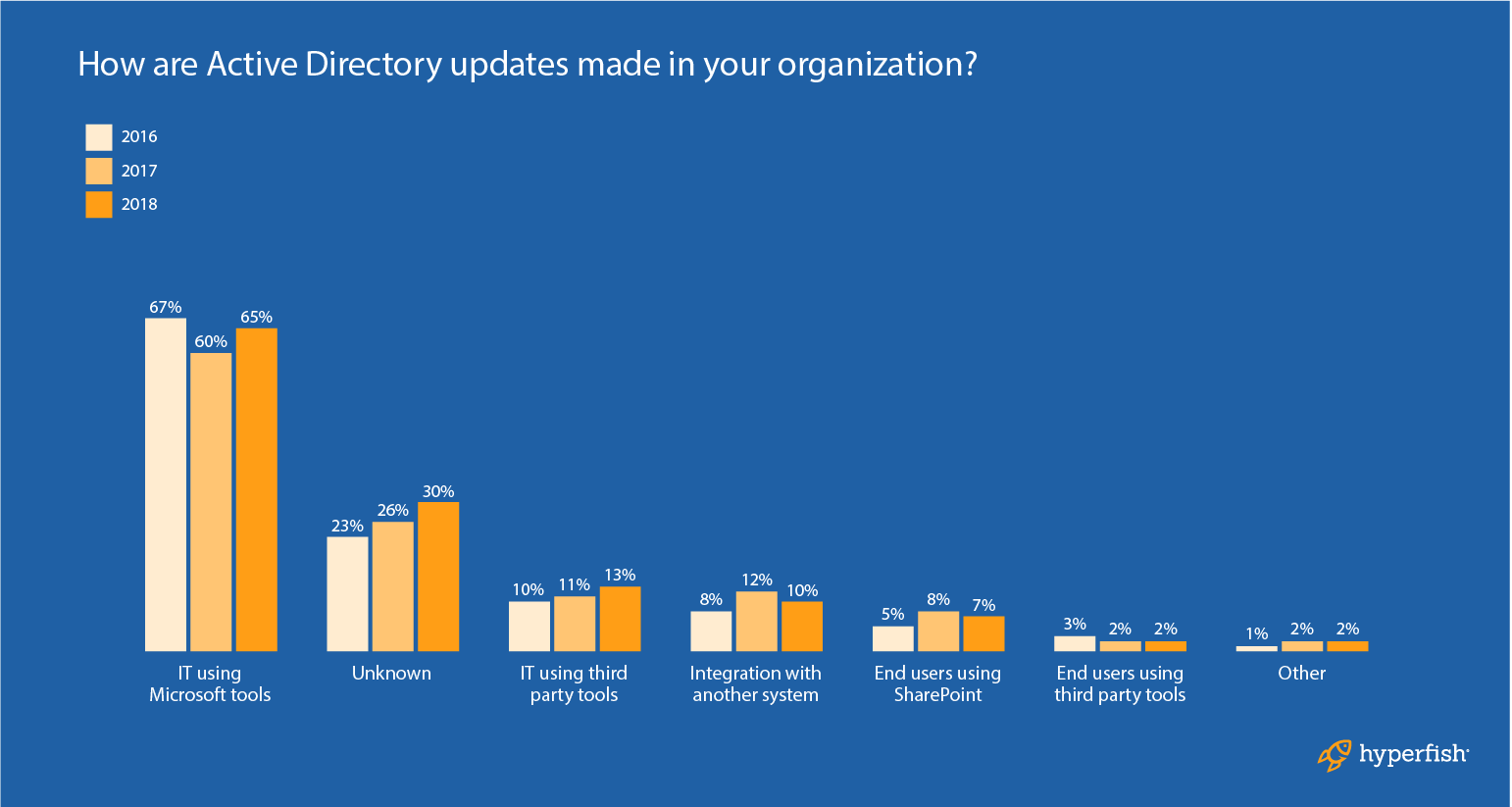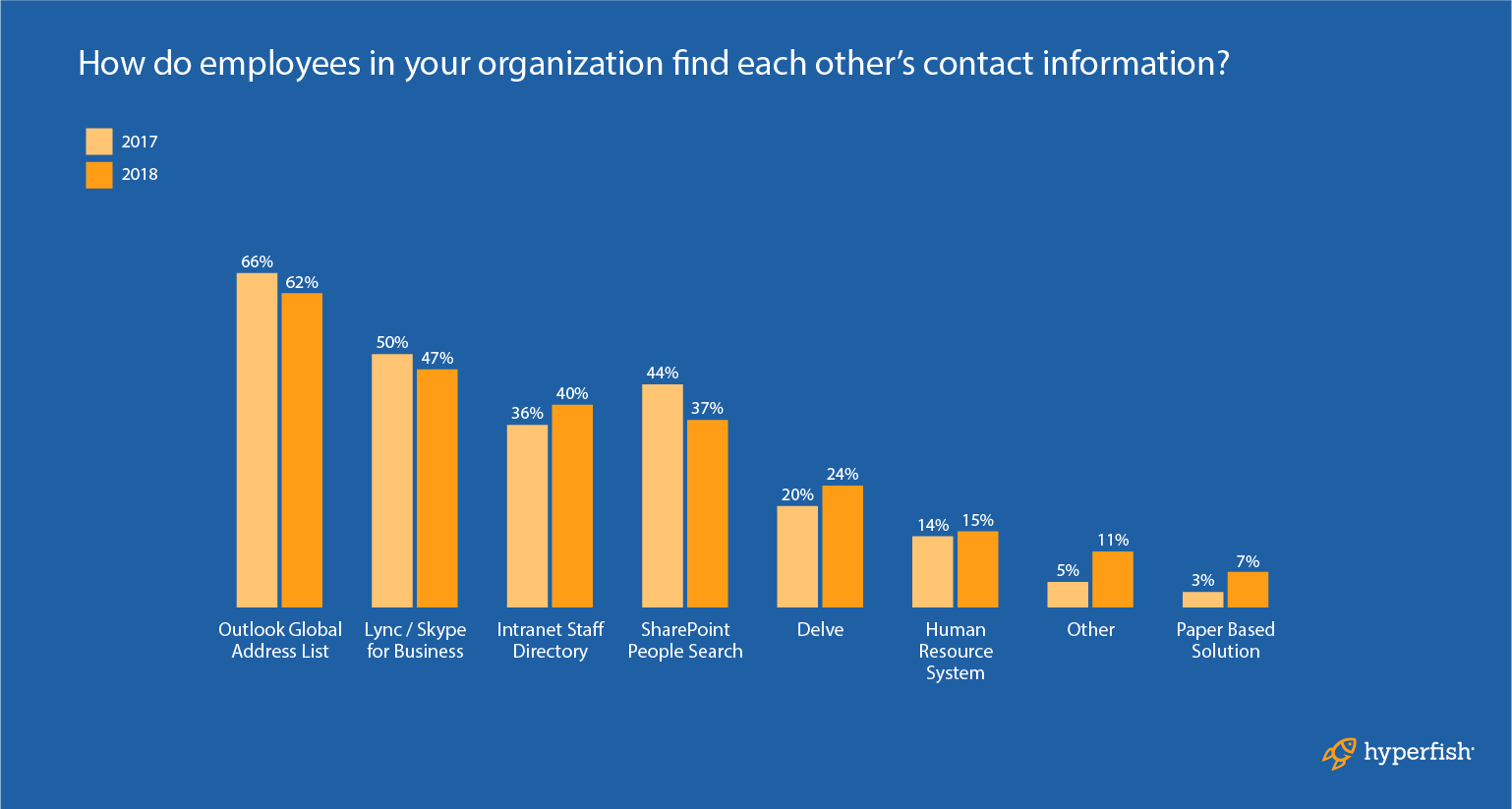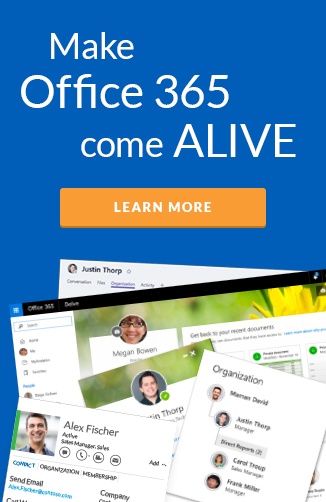The annual SharePoint and Office 356 survey, conducted by Hyperfish, LiveTiles, Sharegate and Nintex has already revealed a host of insights into how companies manage their internal IT structures. And the consensus across the board is clear: cloud usage continues to rise.
However, the nuances of the study reveal a far more complex picture of companies at different stages of the migration process. Analyzing the ways Active Directories are deployed and used within companies creates a more complete picture of SharePoint and Office 365 adoption.
Here are the biggest findings from the survey around Active Directory (AD).
Hybrid AD usage becomes most popular
As the years pass, more and more organizations are convinced of the clear benefits of cloud computing and choose to save time and money while improving productivity by migrating to the cloud. Where Active Directory (AD) is concerned, hybrid deployments have grown the most in popularity, with exclusively Azure-based AD usage rising by only 1% from 2017 to 2018.
Fully on-premises deployments have reduced significantly to 27% in 2018, falling from 42% in 2017 and 51% the year before. But rather than migrating completely, evidence suggests that companies are reluctant to completely part with their on-premises Active Directory deployments.
The most likely reason for this is because large on-premises organizations have a lot invested in their on-premises infrastructure as well as a lot to migrate before they can move fully to the cloud. Whether it’s users, content, or apps, many would rather build their cloud platform over time, migrating small parts of their overall infrastructure as and when they can. This reduces the time and cost investment they need for the migration and incurs less risk along the way. Therefore, the popularity of hybrid platforms is a natural progression in the process of migrating many companies to the cloud.
For the first time, hybrid deployments have become the most popular AD deployment, rising to become more popular than Azure AD and on-premises combined.

How are Active Directory updates made?
When considering how Active Directory updates are made within organizations, the most obvious thing we can see is that 65% of users take advantage of Microsoft tools and IT to manage the critical information stored within AD. It's not surprising that organizations continue to place the responsibility of AD updates on their IT team, but in many organizations this creates a significant burden on this team.
The amount of organizations unaware of how AD updates are made has risen year on year, constituting almost a third of those surveyed in 2018. This suggests a lack of any centralized method around updating employee information in AD.
Given the reliance Office 365 has on employee information in AD, this points to the opportunity organization have in moving away from manual and labor intensive ways of keeping AD profiles up to date and looking at automating this problem.
How do users use Active Directories?
It’s one thing to consider AD usage on a system-wide level, but the biggest insights come not from IT managers, but from individual users. Considering the way employees within an organization access each other’s contact information allows us to draw important conclusions about cloud adoption.
This study reveals that there’s a broad range of different ways that contact information can be shared within a company. As Office 365 changes, new apps emerge that better serve their purposes than their predecessors - for example, the way Microsoft Teams is steadily replacing Skype for Business. But adopting these new apps can often take time, creating a situation where businesses are using multiple apps for similar tasks.
This leads to complications, with information being lost as employees search for it in different ways, and different versions of the same information being stored in different places. Businesses looking to more tightly integrate these processes should look towards applications like Microsoft Teams, SharePoint and Delve that use a common infrastructure to process the same fundamental information. The graph above shows that this process is well underway – but there’s plenty of progress yet to be made.

Cloud deployment: A transition in progress
It’s clear that more companies are using cloud-based infrastructure to manage their Active Directories. As they transition to the new platform, it’s inevitable that they’ll continue to use aspects of their familiar systems before finally integrating under a common, cloud structure. This will manifest in several different ways, including operating a hybrid IT system or continuing to use third-party IT to manage business critical information.
The use of disparate applications for finding contact information is a natural consequence of the ever-evolving nature of the digital workplace. But workers within a business must be able to access the same information, without wasting valuable productive time searching for it.
Hyperfish helps organizations connect their employees to the people they need, by ensuring employee profiles are always accurate and up to date . Get started today for free with Hyperfish Lite to manage Office 365 profile photos.


